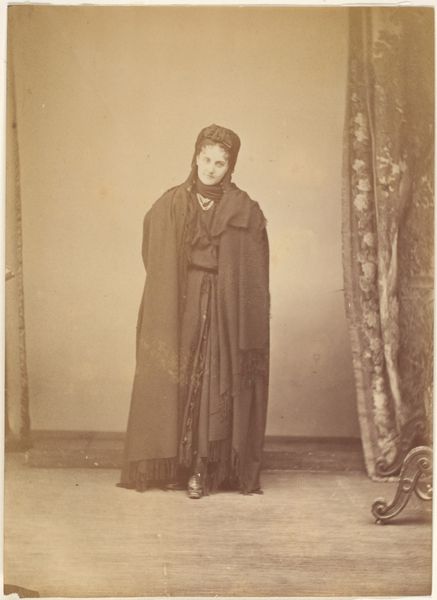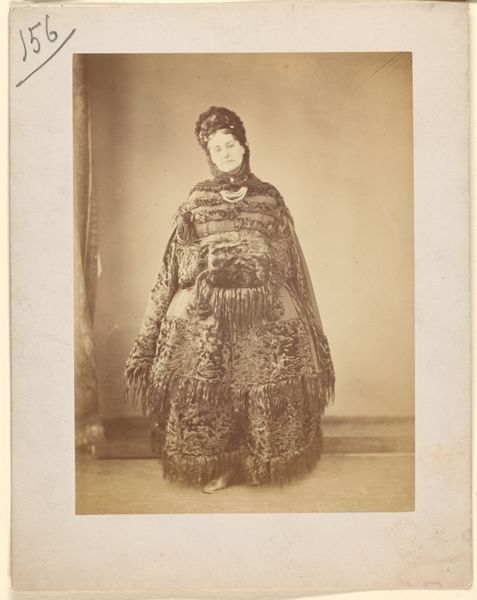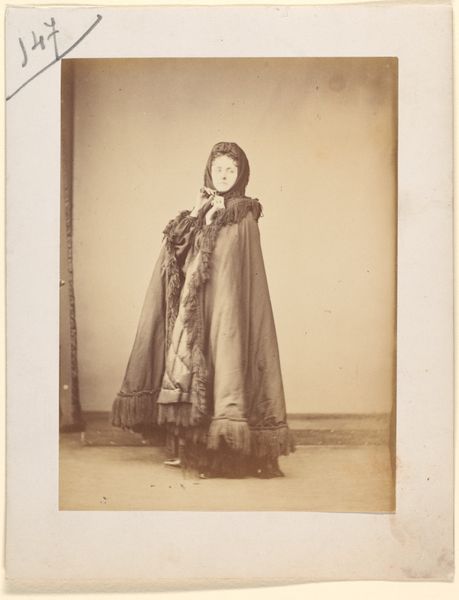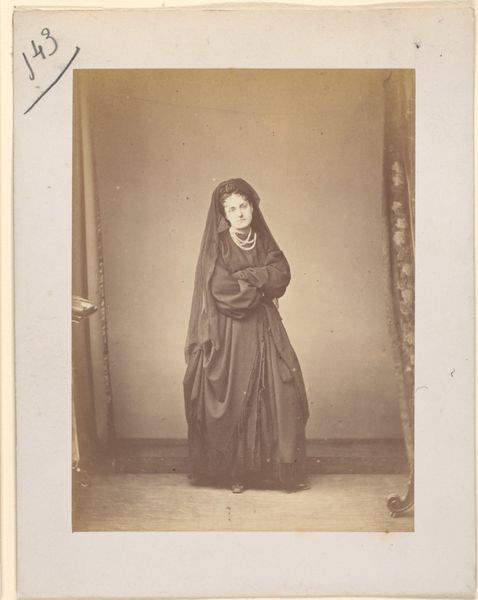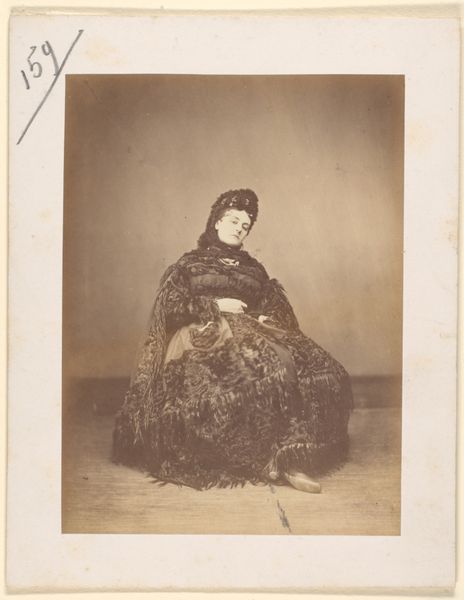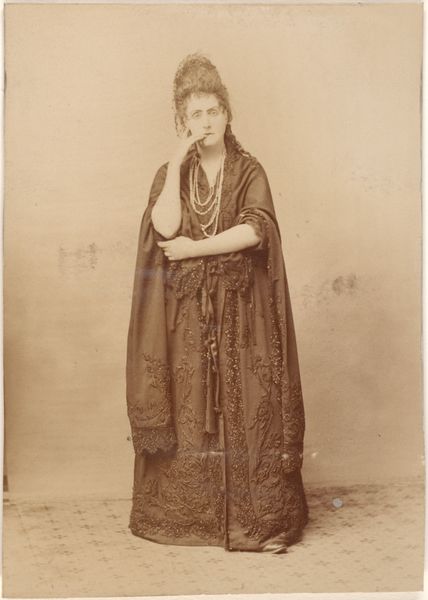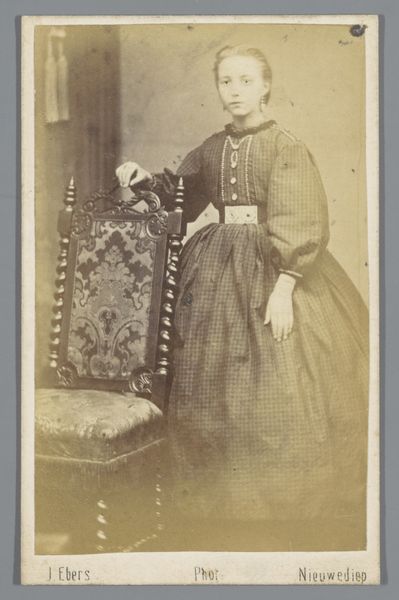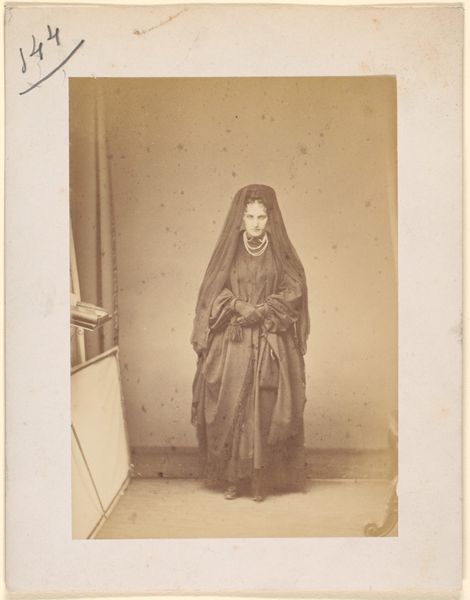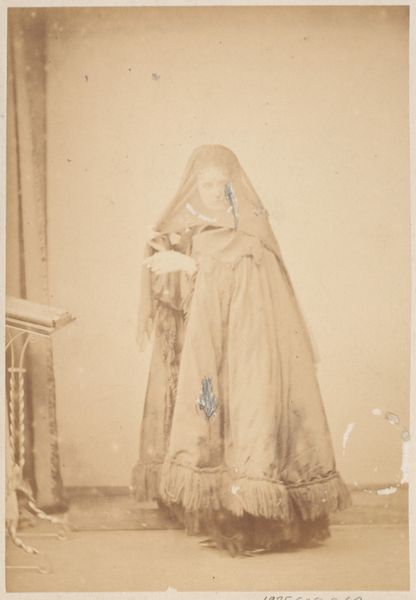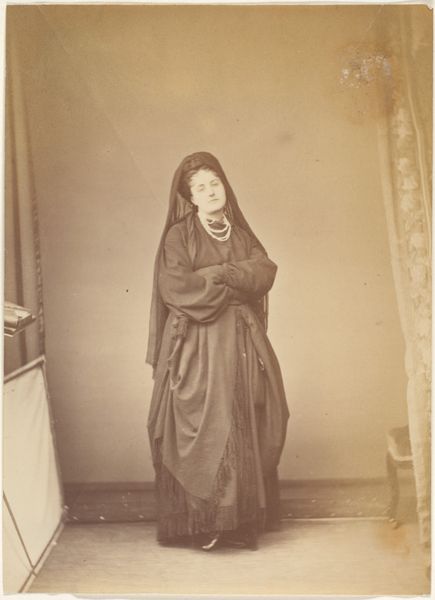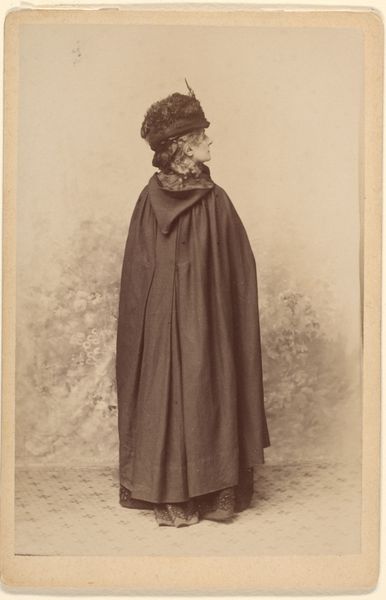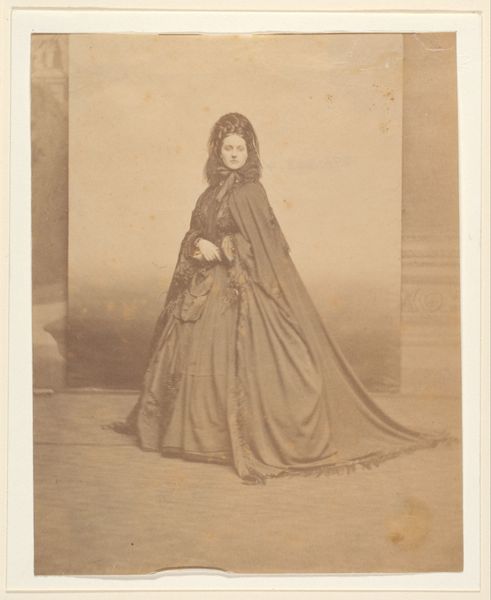![[La Comtesse in Cape with Fringe; Serie à la Ristori] by Pierre-Louis Pierson](/_next/image?url=https%3A%2F%2Fd2w8kbdekdi1gv.cloudfront.net%2FeyJidWNrZXQiOiAiYXJ0ZXJhLWltYWdlcy1idWNrZXQiLCAia2V5IjogImFydHdvcmtzLzkzOTcxY2VhLWFmNmQtNDE3My05MmUyLWEwMDBhNDViZmU2Yi85Mzk3MWNlYS1hZjZkLTQxNzMtOTJlMi1hMDAwYTQ1YmZlNmJfZnVsbC5qcGciLCAiZWRpdHMiOiB7InJlc2l6ZSI6IHsid2lkdGgiOiAxOTIwLCAiaGVpZ2h0IjogMTkyMCwgImZpdCI6ICJpbnNpZGUifX19&w=3840&q=75)
[La Comtesse in Cape with Fringe; Serie à la Ristori] 1860s
0:00
0:00
photography, albumen-print
#
portrait
#
photography
#
historical photography
#
albumen-print
Dimensions: 8.3 x 13.0 cm (3 1/4 x 5 1/8 in.)
Copyright: Public Domain
Editor: Here we have an albumen print photograph from the 1860s by Pierre-Louis Pierson, titled "[La Comtesse in Cape with Fringe; Serie à la Ristori]". The tones are sepia, with a woman cloaked in fringed garments dominating the frame. It’s intriguing how much texture the albumen print captures. What stands out to you about the material aspects of this piece? Curator: For me, it's crucial to think about how the materiality of this print intertwines with the social reality it depicts. Albumen printing, developed in the 1850s, democratized photography to some extent. This portrait of the Comtesse suggests an interesting tension: an aristocratic subject utilizing a relatively accessible, mass-producible medium for image creation. We have a countess using the means of photography to immortalize herself: what's intriguing here is the potential collision between older traditions of aristocratic portraiture and new forms of mass media and visibility. The very texture of the albumen – that delicate sheen – speaks to this burgeoning commercialization of image-making. Editor: That's a really interesting point! It's almost like she's embracing a new kind of celebrity through the materiality of the photograph itself. Does the clothing fit into your analysis? Curator: Absolutely! Consider the labor involved in producing such elaborate textiles and garments. The cape with its fringe represents not just personal adornment, but the exploitation of skilled labor. By focusing on the garments themselves – the weaving, the dyeing, the intricate detailing – we can unpack a whole history of production, class, and consumption embedded in this seemingly simple portrait. Moreover, think about the performative aspect, Serie à la Ristori might be referencing theatre, what might we infer from these allusions to drama, fiction and self representation. Editor: So it’s more than just a portrait; it’s a layered object imbued with its production methods and socio-economic context? Curator: Precisely! By analyzing the photograph's material existence – its production, circulation, and consumption – we can reveal so much about the social dynamics of the era. Editor: This has completely shifted my perspective. I was initially focused on the Countess, but now I'm fascinated by what the materials can tell us about the wider world! Curator: Exactly, seeing art through the lens of material analysis always unearths untold stories.
Comments
No comments
Be the first to comment and join the conversation on the ultimate creative platform.
